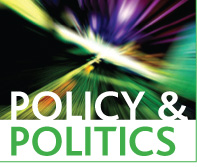Colin Knox
 The Policy Briefing section of Discover Society is provided in collaboration with the journal Policy & Politics. The section is curated by Sarah Brown.
The Policy Briefing section of Discover Society is provided in collaboration with the journal Policy & Politics. The section is curated by Sarah Brown.
So, Northern Ireland is sorted. A devolved executive is in place, violence has reduced significantly, and we are selling our peace process around the world as a model of power-sharing for contested societies. Well yes, to some extent. But in my recent article analysing the fragility of the peace process entitled Northern Ireland: where is the peace dividend, and published in Policy & Politics, I argue that we now have a ‘negative peace’ where those most impacted by violence have gained least from the peace process.
Not to take away from all those who have got us to this point but people living in highly segregated, socially deprived areas have actually witnessed the quality of their lives remain the same or regress under ‘peace’. If we look at some of the indicators which determine if people’s lives have got better (health, education, social welfare, mental health, and crime), there is little evidence that much has changed since the Belfast/Good Friday Agreement. Such is the sensitivity of this topic that a research paper prepared by the Northern Ireland Assembly, Research and Library Service which tracked some of these indicators was withdrawn from the official website.
Negative peace means young people living in these areas experience no improvement in their life chances and are lured into the hands of dissidents who fill their minds with republican and loyalist ideology and the prospect of easy money through racketeering, drugs and criminal activities.
The Government’s response through a Neighbourhood Renewal Programme has been pitifully inadequate to the extent that their own researchers don’t even know if the multi-million pounds spent on the various interventions have actually worked.
The evaluation noted that the main aim of the Neighbourhood Renewal Programme was to reduce the gap between the most deprived neighbourhood and the rest of the country and flagged the importance of being ‘realistic about what the programme has or might have achieved’ (Department for Social Development [DSD], 2011: 3). The report concluded with a number of key findings which included:
- Whilst there has been some narrowing of the gap between the neighbourhood renewal areas and the rest of Northern Ireland on a range of outcome indicators, the areas remain some way behind in both relative and absolute terms.
- The Neighbourhood Renewal Strategy has laid the foundations necessary for future action.
- Given the scale of the problems still remaining in the most deprived areas, the regeneration programmes will not be enough on their own to achieve significant change (DSD, 2011: 6-7).
The tone and substance of these conclusions suggest that the internal (Department for Social Development) evaluators were dampening expectations of narrowing the gap between NRAs and non-NRAs. The empirical section in this paper which considers the most recent outcome indicators suggests that such pessimism is well founded.
To be more explicit about what officials imply. The neighbourhood renewal programme did not have adequate baseline information, outcome indicators emerged or were refined over time and data had to be gathered accordingly, and there is no way of attributing positive movement in reducing the gap between the most deprived neighbourhoods and the rest of Northern Ireland to the neighbourhood renewal programme intervention. The internal evaluators expressed concerns about their ‘ability to assess the impact of the programme’. More specifically they argued:
There is generally a lack of solid evidence of the overall impact of geographically targeted programmes on multiple deprivation. Such evidence as there is suggest that the gap between the most deprived areas in Northern Ireland and the rest has not closed in any substantial way (and it is likely that the most deprived areas are particularly affected by economic downturn). It has been suggested that without targeted programmes the gap would have widened further. There is a need to understand the impact of programmes and to improve understanding of what works (DSD, 2011: 138).
This is a classic failure in attempts to create joined-up government aimed at tackling cross-cutting problems which beset poor, segregated communities in Northern Ireland.
So, out with the old and in with the new. The Delivering Social Change initiative is now the new kid on the block which is the latest policy on offer, with the imprimatur of the First and Deputy First Ministers, aimed at encouraging (‘forcing’) departments to work together to tackle multi-faceted problems.
At the launch of the £26m initiative the (then) First Minister noted:
The reality is that we cannot continue to address the so-called intractable problems of poverty and social inclusion using the methods employed in the past. We have too many strategies, too many policies and too many action plans, many of which refer to work already proposed or under way and do not add real value. The difference with this new approach is that we are not interested in producing vast and unwieldy documents for their own sake (Robinson, 2012: 2).
Will it work? Too early to tell.
Colin Knox is Emeritus Professor of Public Policy, Ulster University and Professor of Public Policy Nazarbayev University, Kazakhstan
